Fermenting Beer with Mangrove Jack's M36 Liberty Bell Ale Yeast
Published: July 24, 2025 at 7:39:25 AM UTC
Last updated: November 29, 2025 at 10:28:48 PM UTC
Beer fermentation is a critical step in brewing, and the right ale yeast is key to a great final product. Mangrove Jack's M36 Liberty Bell Ale Yeast is a favorite among homebrewers. It's versatile and works well with many beer styles. This yeast is known for its high attenuation and medium-high flocculation, perfect for beers that balance malt and hop flavors. Knowing the characteristics and ideal conditions for this yeast can help brewers achieve their goals. Whether you're an experienced brewer or just starting, the right yeast makes a big difference in your homebrewing.
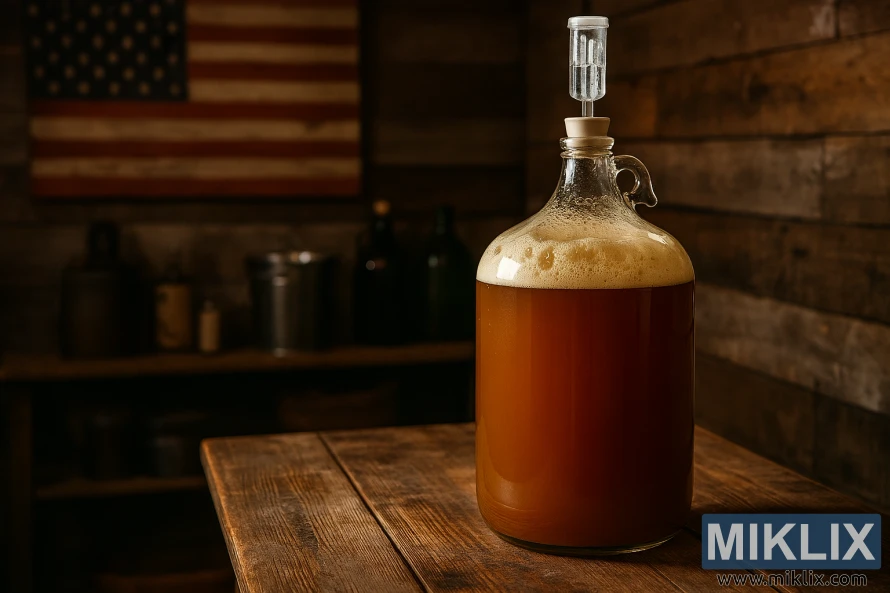
Key Takeaways
- Mangrove Jack's M36 Liberty Bell Ale Yeast is versatile and suitable for various beer styles.
- High attenuation and medium-high flocculation contribute to balanced beer flavors.
- Proper yeast selection is critical for successful beer fermentation.
- This yeast strain is ideal for homebrewers looking to improve their brewing results.
- Understanding yeast characteristics can enhance fermentation outcomes.
Understanding Mangrove Jack's M36 Liberty Bell Ale Yeast
For brewers aiming to enhance fruity esters and malt character, Mangrove Jack's M36 Liberty Bell Ale Yeast stands out. It's celebrated for its versatility, capable of producing a wide range of flavors.
The M36 Liberty Bell Ale Yeast has a medium-high flocculation, ensuring a clear finish in the final product. Its attenuation level is around 76.0%, making it ideal for various beer styles, from pale ales to porters.
Some key characteristics of Mangrove Jack's M36 Liberty Bell Ale Yeast include:
- Medium-high flocculation for a clear finish
- High attenuation level (76.0%) for a dry finish
- Ability to accentuate both fruity esters and malt character
- Versatility in brewing a range of beer styles
Understanding these characteristics helps brewers use Mangrove Jack's M36 Liberty Bell Ale Yeast effectively. This way, they can achieve their desired beer profile.
Optimal Brewing Conditions and Requirements
For successful fermentation, the right brewing conditions are key. Mangrove Jack's M36 Liberty Bell Ale Yeast excels in temperatures between 62.6°F and 73.4°F. This makes it perfect for home brewers aiming for consistent results.
Creating a stable fermentation environment is vital. It ensures your beer ferments cleanly and efficiently. This leads to a high-quality final product. Brewers should aim for the optimal temperature range to achieve this.
- Temperature range: 62.6°F to 73.4°F (17.0-23.0 °C)
- Yeast strain: Mangrove Jack's M36 Liberty Bell Ale Yeast
- Fermentation profile: Clean and efficient
Following these optimal brewing conditions guarantees a successful fermentation. This results in a beer with the desired flavor and aroma.
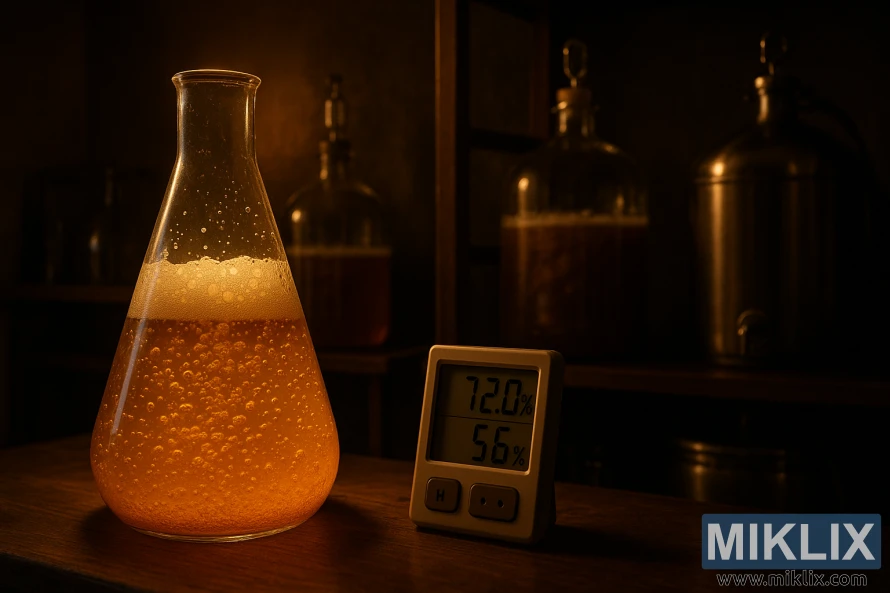
Temperature Range and Fermentation Profile
For brewers using Mangrove Jack's M36 Liberty Bell Ale Yeast, grasping the temperature range and fermentation profile is critical. This yeast ferments vigorously, with a medium-high flocculation rate. This results in a clear finish.
Keeping the fermentation temperature within the optimal range is essential. It ensures the beer's flavor profile is balanced. Brewers can fine-tune the fermentation process by controlling the temperature.
This yeast strain is known for its vigorous fermentation. It produces beers that are not only clear but also have a balanced taste. This makes Mangrove Jack's M36 Liberty Bell Ale Yeast a favorite among brewers seeking high-quality ales.
- The yeast ferments vigorously, contributing to a lively fermentation process.
- A medium-high flocculation rate ensures a clear finish, improving the beer's appearance.
- Temperature control during fermentation is key to achieving the desired flavor and aroma characteristics.
By managing the fermentation temperature and understanding the yeast's profile, brewers can enhance their brewing process. This leads to the creation of high-quality beers that meet the desired standards.
Flavor and Aroma Characteristics
Mangrove Jack's M36 Liberty Bell Ale Yeast offers brewers a unique balance of fruity esters and malt character. This yeast is celebrated for its broad flavor profile. It enhances both fruity esters and malt characteristics.
Beers brewed with this yeast boast a rich, full-bodied taste. They feature a crisp hop bitterness and aroma. This yeast is perfect for brewers aiming to create balanced, refreshing beers.
- Enhances fruity esters and malt character
- Allows for a crisp hop bitterness and aroma
- Produces a complex and balanced flavor profile
Mangrove Jack's M36 Liberty Bell Ale Yeast is versatile, suitable for various beer styles. It allows brewers to craft beers with a distinctive character. This sets their beers apart in the market.

Compatible Beer Styles
Brewers can explore a variety of beer styles with Mangrove Jack's M36 Liberty Bell Ale Yeast. This yeast is perfect for experimenting with different recipes and techniques. It's an excellent choice for those looking to expand their brewing horizons.
The M36 Liberty Bell Ale Yeast is commonly used in brewing various beer styles, including:
- Pale Ales
- IPAs
- Porters
- English-style ales
- Other ale-based beers
This yeast strain's versatility is due to its ability to produce balanced flavors and aromas. Whether brewing a hoppy IPA or a rich porter, Mangrove Jack's M36 Liberty Bell Ale Yeast ensures high-quality, balanced beers.
For home brewers, this yeast offers the flexibility to experiment with different beer styles without needing to switch yeast strains. Its performance and consistency make it a reliable choice for both novice and experienced brewers.
In summary, Mangrove Jack's M36 Liberty Bell Ale Yeast is a versatile and reliable choice for brewing a wide range of beer styles. It's an ideal companion for home brewers and professional brewers alike.
Pitch Rate and Cell Count Information
Understanding the pitch rate and cell count for Mangrove Jack's M36 Liberty Bell Ale Yeast is key to a healthy fermentation. The pitch rate is the amount of yeast added to the wort. It's critical for achieving the desired fermentation profile.
Mangrove Jack's advises using a fresh sachet of their dried yeast for every brew. This yeast is not suitable for harvesting or repitching. It ensures the yeast is healthy and viable, leading to a successful and efficient fermentation process.
Following the recommended pitch rate and cell count guidelines is essential for optimal fermentation performance. This approach helps brewers avoid common issues like under or over-pitching. Such issues can impact the flavor and quality of the final product.
By sticking to the manufacturer's guidelines on pitch rate and cell count, brewers can achieve consistent results. This leads to producing high-quality beers with Mangrove Jack's M36 Liberty Bell Ale Yeast.
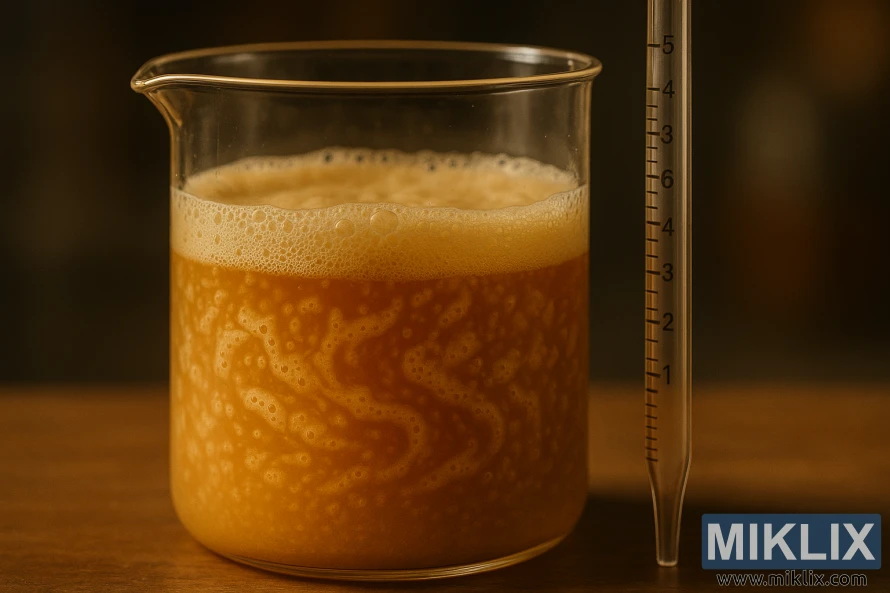
Performance During Primary Fermentation
Mangrove Jack's M36 Liberty Bell Ale Yeast is celebrated for its outstanding performance in primary fermentation. It ferments vigorously, with a medium-high flocculation that leads to a clear finish.
This yeast's activity is key during this phase, ensuring a balanced flavor. It's perfect for brewers aiming to craft high-quality beers.
By closely monitoring and adjusting the fermentation conditions, brewers can enhance this yeast's performance. This results in a beer with a clean, balanced taste. It showcases the yeast's capabilities.
Managing Secondary Fermentation
Secondary fermentation is a vital stage in brewing, where the beer is conditioned and matured. This phase is essential for developing the beer's character and ensuring even aging. It's where the beer's flavor profile is refined.
During secondary fermentation, brewers must control temperature and environment. This is key for the maturation process. Here are some important considerations:
- Maintain a consistent temperature between 15°C to 18°C (59°F to 64°F) to slow down the fermentation process.
- Monitor the beer's specific gravity to determine the optimal time for racking or transferring the beer to a secondary vessel.
- Ensure that the secondary vessel is properly sanitized to prevent contamination.
Effective management of secondary fermentation enhances the beer's flavor and aroma. The conditioning process allows the beer to mature and develop a more complex flavor profile.
Some best practices for managing secondary fermentation include:
- Minimizing exposure to oxygen to prevent oxidation and spoilage.
- Using a secondary vessel that is designed for conditioning and maturation.
- Regularly checking the beer's specific gravity and flavor profile to determine when it has reached the desired level of maturity.
Comparing with Other Ale Yeasts
In the realm of ale yeasts, Mangrove Jack's M36 Liberty Bell stands out for its versatility and performance. It excels in producing a wide range of flavors, blending fruity esters with malt character. This makes it a favorite among brewers seeking to craft complex beers.
When comparing Mangrove Jack's M36 Liberty Bell Ale Yeast to other ale yeasts, several key characteristics stand out. Its fermentation profile is robust, ensuring a clean and efficient process. This yeast is renowned for its ability to enhance beer complexity without dominating the other ingredients.
- Produces a wide range of flavors and aromas, making it suitable for various beer styles.
- Enhances fruity esters and malt character, contributing to a rich and complex flavor profile.
- Allows for a clean fermentation process, reducing the risk of off-flavors.
In comparison to other popular ale yeasts, Mangrove Jack's M36 Liberty Bell Ale Yeast is favored for its consistency and reliability. Both homebrewers and professional brewers value its performance. It consistently produces high-quality beers, making it a go-to choice for many.
Troubleshooting Common Issues
Troubleshooting is a critical skill for brewers, essential when using versatile yeasts like Mangrove Jack's M36 Liberty Bell Ale Yeast. Despite its reliability, brewers may face challenges that impact fermentation, flavor, and aroma.
Common problems include stuck fermentation, off-flavors, and inconsistent attenuation. It's vital to understand these issues to effectively troubleshoot.
- Stuck fermentation can stem from incorrect pitching rates, inadequate nutrients, or temperature fluctuations.
- Off-flavors may arise from contamination, improper yeast handling, or excessive ester production.
- Inconsistent attenuation can be caused by temperature variations, yeast health, or wort composition.
Addressing these issues requires a systematic approach. Here are some solutions:
- To resolve stuck fermentation, verify the pitching rate and ensure adequate nutrients. Gradually adjust the temperature to stimulate yeast activity.
- To prevent off-flavors, maintain proper sanitation, handle yeast correctly, and monitor fermentation temperatures.
- For inconsistent attenuation, ensure consistent temperature control, use healthy yeast, and optimize wort composition.
Preventing issues is as critical as troubleshooting. Regularly monitoring fermentation conditions, maintaining healthy yeast, and optimizing brewing practices can minimize problems.
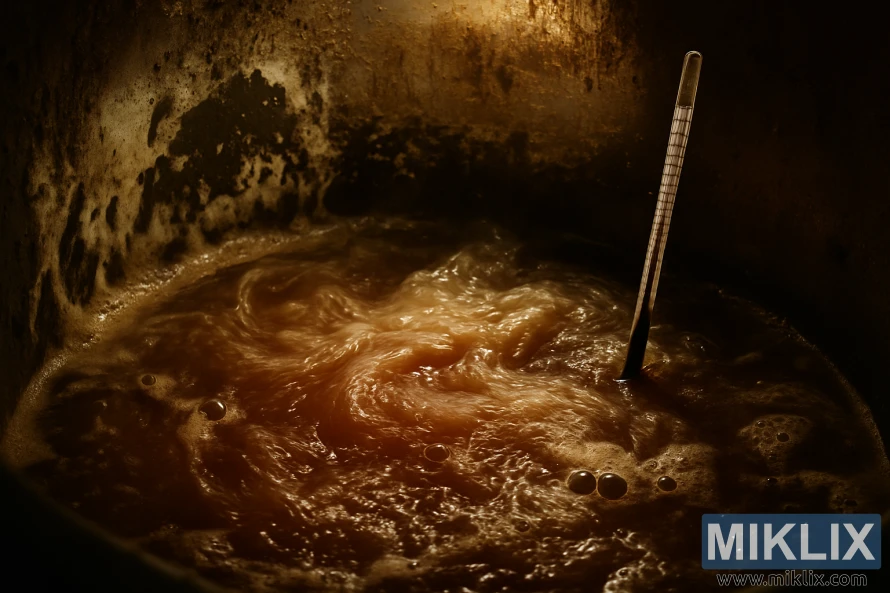
Storage and Viability Guidelines
Mangrove Jack's offers detailed advice on storing and handling their dried yeasts, like M36 Liberty Bell Ale Yeast. To keep the yeast's viability and performance, following proper storage and handling is key.
Start with storing the yeast in a cool, dry spot. Ensure the packaging is tightly sealed to block moisture. It's also vital to keep it away from direct sunlight and heat, as these can harm its viability.
When handling the yeast, aim to reduce air and moisture exposure. Open the packaging just before use and seal it again quickly. Also, avoid extreme temperatures during handling.
Here are some essential guidelines to follow:
- Store in a cool, dry place.
- Keep packaging sealed when not in use.
- Avoid exposure to direct sunlight and heat.
- Minimize exposure to air and moisture during handling.
By sticking to these storage and handling tips, brewers can ensure Mangrove Jack's M36 Liberty Bell Ale Yeast stays viable and ferments well. Proper care and storage are essential for consistent beer brewing results.
Professional Brewer Testimonials
Christian, the creator of Beer-Analytics, has shared his hands-on experience with Mangrove Jack's M36 Liberty Bell Ale Yeast. He offers a unique perspective on its strengths and weaknesses. This yeast has been a game-changer for Christian, providing consistent fermentation results and a clean flavor profile. It complements a variety of beer styles.
Other professional brewers have also praised Mangrove Jack's M36 Liberty Bell Ale Yeast. They highlight its reliability and performance. The yeast's ability to ferment at a wide range of temperatures makes it appealing to brewers looking to experiment with different styles.
- Consistent fermentation results
- Clean flavor profile
- Versatility in brewing various beer styles
These testimonials from professional brewers showcase the Mangrove Jack's M36 Liberty Bell Ale Yeast's versatility. It's suitable for both commercial and homebrewing settings. By leveraging the experiences of seasoned brewers, those looking to try this yeast can make more informed decisions about its suitability for their brewing needs.
Best Practices for Optimal Results
Brewers aiming for top-notch beers with Mangrove Jack's M36 Liberty Bell Ale Yeast should follow established brewing tips. It's vital to stick to best practices and guidelines from seasoned brewers and the manufacturer. This ensures beers with balanced flavor and aroma.
Optimizing yeast performance is key for the desired fermentation profile and flavor. Here are essential best practices to follow:
- Keep the fermentation temperature consistent within the recommended range for optimal yeast performance.
- Pitch the yeast at the correct rate to achieve the desired cell count and fermentation profile.
- Monitor the fermentation process closely to identify any issues or deviations from the expected profile.
- Follow proper conditioning procedures to allow the beer to mature and develop the desired flavor and aroma.
By adhering to these best practices, brewers can ensure their yeast is performing at its best. This leads to high-quality beers that meet their expectations. Brewers should also consider these additional brewing tips to further optimize their results:
- Use a high-quality wort that is free from contaminants and provides the necessary nutrients for optimal yeast growth.
- Ensure that the brewing equipment is properly sanitized to prevent contamination and spoilage.
- Monitor the yeast's performance and adjust the brewing process as needed to achieve the desired results.
By combining these best practices and brewing tips, brewers can optimize their results with Mangrove Jack's M36 Liberty Bell Ale Yeast. This will help produce high-quality beers that showcase the unique characteristics of this yeast strain.
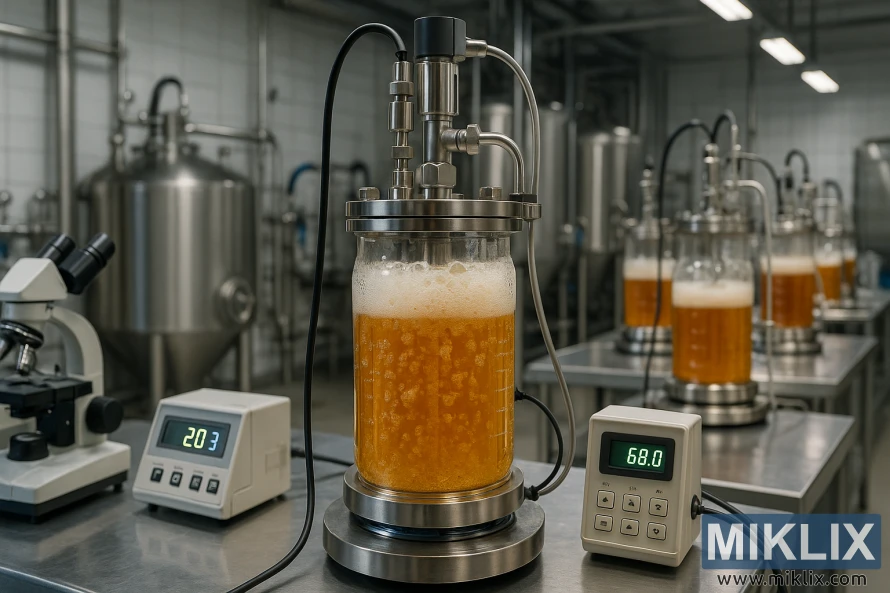
Conclusion
Mangrove Jack's M36 Liberty Bell Ale Yeast is a top-notch yeast strain for brewers. It can significantly enhance your brewing process. By grasping its characteristics and ideal brewing conditions, brewers can achieve outstanding results.
This yeast is perfect for a variety of beer styles, creating complex flavors and balanced beers. It's a reliable choice for brewers of all levels. Its consistent fermentation process makes it ideal for both experienced brewers and newcomers.
Using Mangrove Jack's M36 Liberty Bell Ale Yeast can lead to the creation of high-quality beers. It meets the desired flavor and aroma profiles. Its robust performance and versatility make it a valuable asset for brewers.
Further Reading
If you enjoyed this post, you may also like these suggestions:
- Fermenting Beer with CellarScience Hazy Yeast
- Fermenting Beer with Bulldog B34 German Lager Yeast
- Fermenting Beer with White Labs WLP300 Hefeweizen Ale Yeast
